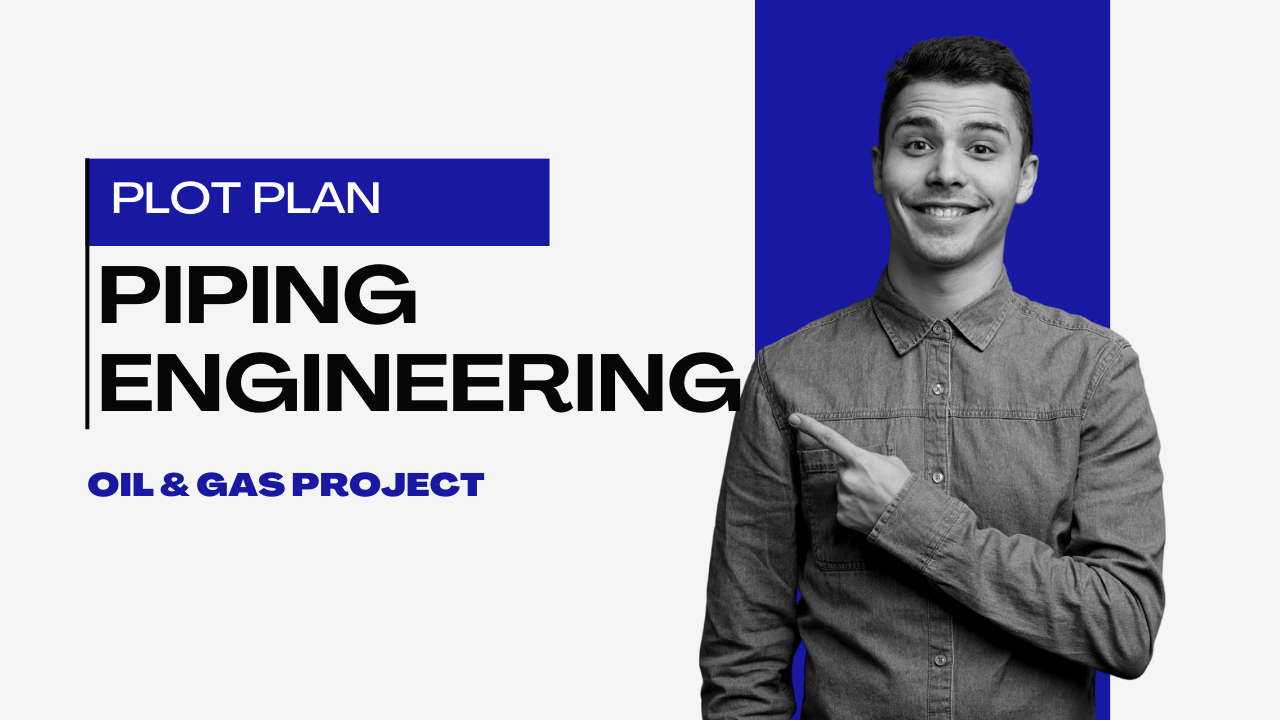Introduction
In the intricate world of piping engineering, a well-structured and thought-out plot plan is a critical component for the success of any project. A plot plan acts as a blueprint, providing a clear visual representation of the project layout. This guide will delve deep into the concept of a plot plan in piping engineering, highlighting its importance, key elements, and best practices for implementation. Check out the ASME B31.3 Standards here.
Table of Contents
Plot Plan in Piping Engineering: An Overview
A plot plan in piping engineering is a detailed illustration that showcases the arrangement of various components within an industrial facility. It serves as the foundation upon which the entire project is built. The primary goal of a plot plan is to ensure optimal utilization of space, efficient workflow, safety compliance, and ease of maintenance. By providing a visual representation of equipment, pipelines, structures, and other essential elements, a plot plan aids in decision-making, collaboration, and successful project execution.
Don’t miss the Complete Course on Piping Engineering: Check Now
By EPCLand.com
Key Elements of a Plot Plan in Piping Engineering
A well-structured plot plan comprises several key elements that contribute to its effectiveness. These elements include:
1. Equipment Layout
The strategic placement of equipment is crucial for ensuring smooth operations and accessibility. Proper equipment layout minimizes interference, enhances safety, and facilitates maintenance activities.
2. Piping Network
The arrangement of pipelines is a vital aspect of a plot plan. It outlines the paths through which fluids and gases flow, ensuring efficient transport and preventing clashes between pipes.
3. Utility Systems
Utility systems encompass essential services such as water supply, electrical connections, and ventilation. A clear representation of these systems is essential for overall functionality.
4. Safety Considerations
Safety is paramount in any industrial setting. A plot plan must incorporate safety zones, escape routes, and emergency equipment locations to ensure a secure environment for workers.
5. Environmental Factors
Environmental considerations, such as wind direction, sunlight exposure, and noise pollution, play a role in plot plan design. Addressing these factors helps create a harmonious work environment.
6. Access Points
Efficient movement of personnel and equipment is facilitated by well-defined access points. Properly placed access routes minimize bottlenecks and increase productivity.
Implementing a Plot Plan: Best Practices
Successfully implementing a plot plan requires careful planning and adherence to best practices. Consider the following guidelines:
1. Collaboration
Involve various stakeholders, including engineers, architects, and safety experts, in the plot plan development process. Their expertise will contribute to a well-rounded and effective plan.
2. Flexibility
Design the plot plan with flexibility in mind. Industries are dynamic, and the ability to accommodate future changes is essential for long-term success.
3. Compliance
Adhere to industry standards and regulations. Ensuring compliance with safety, environmental, and zoning requirements is vital for project approval and risk mitigation.
4. Clear Documentation
Accurate and detailed documentation is essential. Use standardized symbols, labels, and annotations to avoid confusion during the project’s execution phase.
5. Regular Updates
As the project progresses, the plot plan may need adjustments. Regularly update the plan to reflect any modifications and ensure its accuracy.
FAQs
Q: What is the significance of a plot plan in piping engineering? A: A plot plan provides a visual representation of the project layout, aiding in efficient space utilization, safety compliance, and project execution.
Q: How does a plot plan enhance safety? A: A plot plan incorporates safety zones, escape routes, and emergency equipment locations, creating a secure environment for workers.
Q: Can a plot plan be modified during the project? A: Yes, a plot plan should be regularly updated to accommodate any changes that occur during the project’s execution.
Q: Who should be involved in the plot plan development process? A: Stakeholders such as engineers, architects, and safety experts should collaborate to create a comprehensive and effective plot plan.
Q: What is the role of environmental factors in plot plan design? A: Environmental factors such as wind direction, sunlight exposure, and noise pollution influence plot plan design to create a harmonious work environment.
Q: Why is equipment layout crucial in a plot plan? A: Proper equipment layout ensures smooth operations, accessibility, and maintenance, contributing to the project’s overall efficiency.
Conclusion
A well-crafted plot plan in piping engineering serves as the cornerstone of successful project execution. By encompassing equipment layout, piping networks, safety considerations, and more, a plot plan facilitates efficient workflow, safety compliance, and optimal space utilization. Collaboration, flexibility, compliance, clear documentation, and regular updates are essential for implementing a plot plan effectively. With these insights and best practices in mind, you’re better equipped to create plot plans that drive the success of piping engineering projects.
Recommended courses (Published on EPCLand):
- Basics of Piping Engineering
- Piping Layout Engineering
- Piping Material Engineering
- Piping Stress Analysis
- Complete Course on Piping Engineering
- Material Requisitions
- Piping Material Specifications
- Valve Material Specifications
Related Video
Attempt Quiz
Question 1:
What is a plot plan in piping engineering?
Explanation: A plot plan in piping engineering is a layout drawing that shows the arrangement of process equipment, major piping components, and other key features within an industrial facility or plant site.
Question 2:
What is the primary purpose of a plot plan?
Explanation: The primary purpose of a plot plan is to provide a visual representation of the layout and arrangement of process equipment, piping, structures, and other important elements within a plant site.
Question 3:
What information is typically included in a plot plan?
Explanation: A plot plan typically includes information about the layout and location of key process equipment, pumps, tanks, structures, major piping components, and other relevant features within the plant site.
Question 4:
Why is a plot plan important in piping design?
Explanation: A plot plan is important in piping design because it provides a clear visualization of the plant layout, helping designers, engineers, and construction teams to efficiently plan and execute piping and equipment installation.
Question 5:
Who typically collaborates on the development of a plot plan?
Explanation: The development of a plot plan involves collaboration among a multidisciplinary team, including piping engineers, process engineers, designers, plant managers, contractors, and other stakeholders to ensure a comprehensive and accurate representation of the plant layout.



